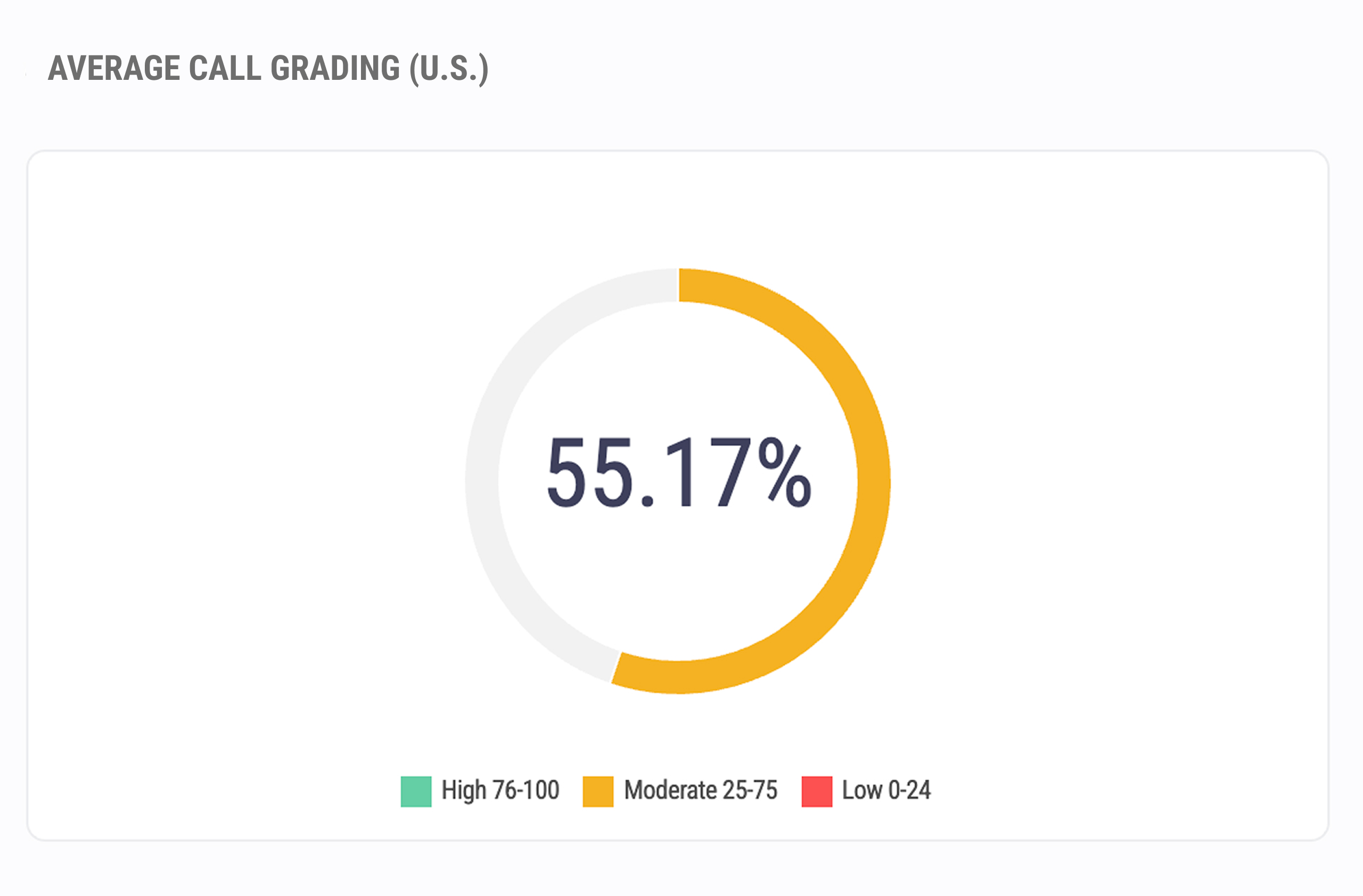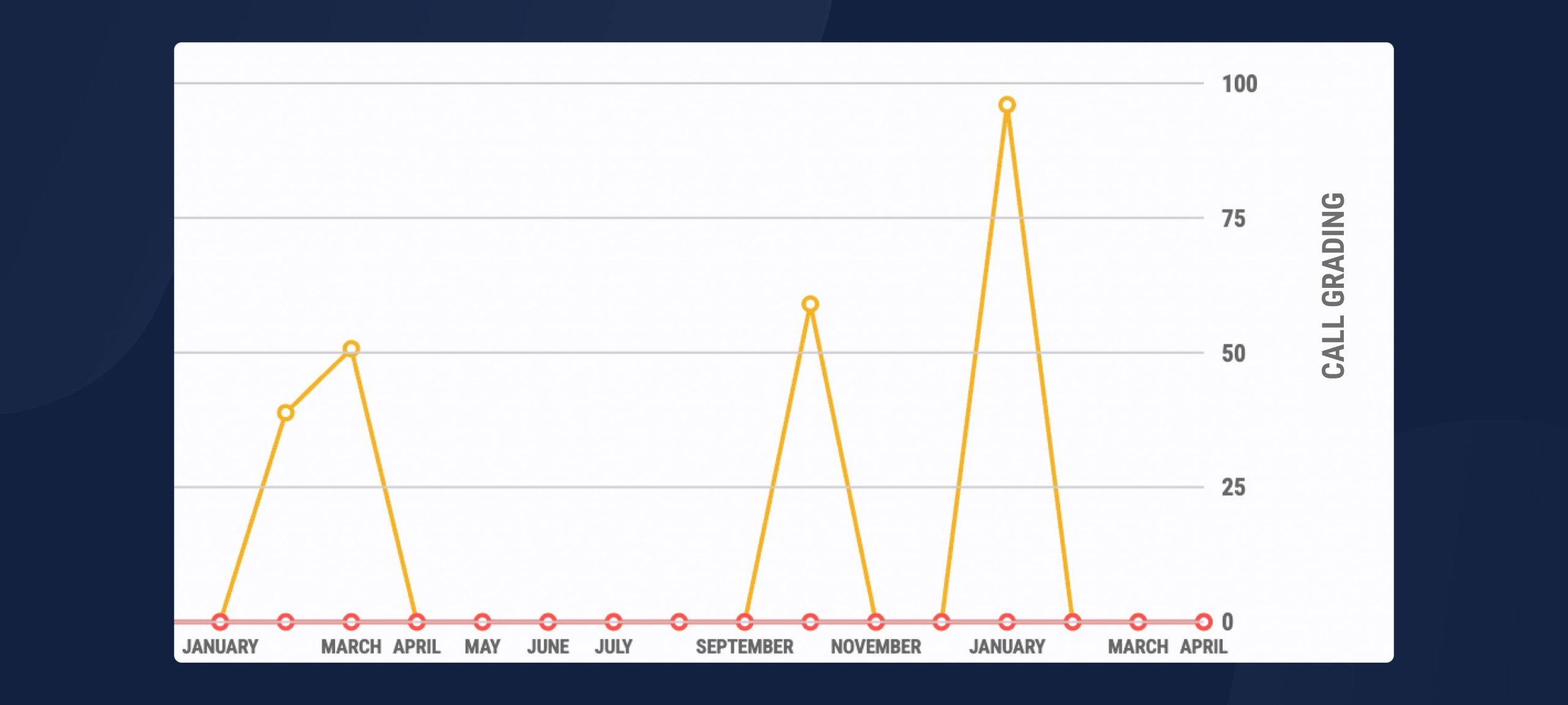See Tracknotion benefits in action
Insights you should have
TrackNotion’s Call Grading feature helps you gauge the quality and outcome of customer calls, giving you clear insights into caller satisfaction.
Call Grades help you quickly spot trends, improve interactions, and boost customer experience. A score of 50 is seen as the middle ground, a score of 80+ is considered great, whereas a score of 20 and below is bad.
Call Grading measures the quality of a call—think of it as a satisfaction meter for your customer interactions.
Using AI, TrackNotion analyzes call transcriptions (see Accessing Your Recordings and Transcripts for how to view them) to detect positive, neutral, or negative tones and keywords. The result? A simple percentage score that shows how the call performed.
Improves Customer Experience: Identifies areas where interactions may leave customers frustrated, allowing businesses to address issues promptly.
Measures Campaign Success: Tracks how well specific campaigns resonate with callers by analyzing grades across campaigns.
Supports Training and Development: Highlights calls with low grades to identify areas where staff might need additional training.
Aids Decision-Making: Provides real-time data for evaluating communication strategies and customer service improvements.
TrackNotion uses a multi-step process to calculate Call Grades:
AI Text Analysis: Scans transcriptions for emotional cues like satisfaction or frustration.
Weighted Scores: Positive tones (e.g., satisfaction, excitement) are assigned higher weights, while negative tones (e.g., frustration) are weighted lower.
Keyword Analysis: Your custom keywords (e.g., “appointment” or “cancel”) add context and weight to the score.
Final Call Grade: Combines AI tone analysis (40%) and keyword impact (60%) into one percentage.
Scores then fall into three ranges:
High (80+): Happy callers, great interactions.
Average (50): Neutral or mixed feelings.
Low (0-20): Unhappy callers—time to dig deeper.
For each campaign, you can define terms specific to your business and assign them scores from 0 to 100 based on positivity or negativity (learn more in Getting the Most Out of TrackNotion’s Analytics).
These perform numerous functions, from monitoring call quality to alerting users when certain words are flagged in a transcript.
For example:
Positive keywords: “Appointment” (70), “Upgrade” (90), “Purchase” (80)
Negative keywords: “Cancel” (10), “Terrible” (12), “Complaint” (5)
When these words pop up in a call, their scores are averaged and factored into the final Call Grade.
Tip: Choose keywords your callers use often for the best results.

TrackNotion makes it easy to check Call Grades across different panels:
Get a big-picture view of sentiment trends for a campaign or across all campaigns over a specific period—just tweak the filters.

The Call and Text Messaging Log (formerly referred to as the Call Analytics panel) allows you to see analytics for specific calls, including Call Grades. You can arrange calls by their grades to quickly identify which interactions were the most positive, neutral, or negative.

Compare Call Grading across campaigns with a handy graph. Select your campaigns, pick “Call Grading,” and set your date range.

Here’s the math behind the magic:
IBM Score: AI assigns a percentage based on emotional tones in the transcript.
Keyword Score: Averages the scores of all keywords found in the call.
Weighted Sum Formula: Combines 40% IBM score + 60% keyword score.
With Call Grading, TrackNotion turns every call into a chance to learn, improve, and succeed.
Insights you should have
Email Subcription Form
Need More Support?